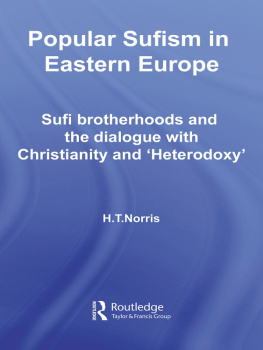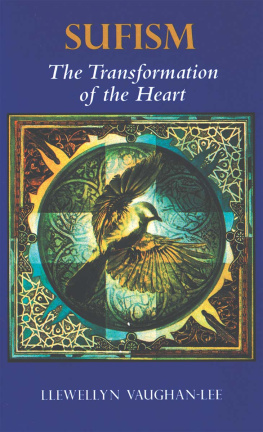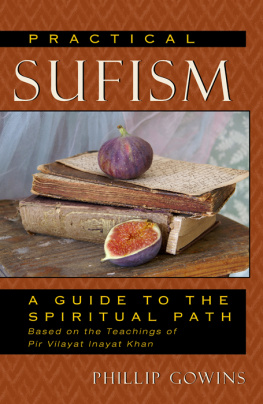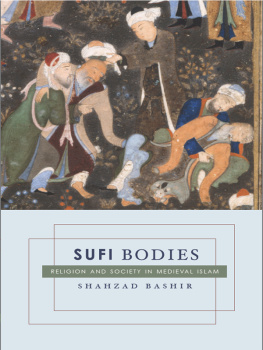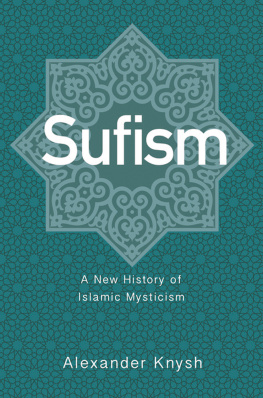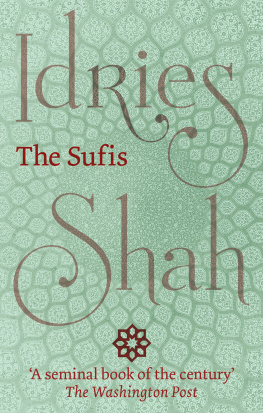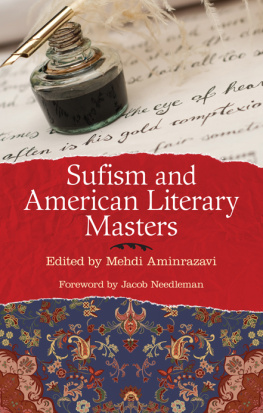Popular Sufism in Eastern Europe
Popular Sufism in Eastern Europe provides a description of the various Sufi orders and movements which penetrated into the Balkans, the Crimean peninsula and other parts of Eastern Europe following the Ottoman conquests.
Many of the Sufis came from Christian societies, principally from Eastern Orthodox backgrounds, but others, such as the Bosnians, from churches which were accused or suspected of heterodoxy of belief and of antinomianism. These beliefs, together with pre-Christian beliefs, influenced by Manichaeism, Dualism and Pantheism, left their mark on Sufi Islam. This book concentrates on the Bosnians, Bulgarians, Albanians and Tatars. Their Sufism reflects their national aspirations, and their writings fuse their mysticism, national faith and folklore in a Sufism which is quite distinct from that in other regions of the Muslim World.
Popular Sufism in Eastern Europe provides a comprehensive understanding of Sufism in this region and is essential reading for scholars of Islam, Sufism and Eastern European studies.
H. T. Norris is emeritus professor of Arabic and Islamic Studies at the School of Oriental and African Studies where he also held the post of Dean of Undergraduate Studies until 1991. His area of expertise includes Arabic literature, Middle Eastern folk epic, Sufism, and Muslim culture.
Routledge Sufi Series
Edited by Ian Richard Netton
Professor of Arabic Studies, University of Leeds
The Routledge Sufi Series provides short introductions to a variety of facets of the subject, which are accessible both to the general reader and to the student and scholar in the field. Each book will be either a synthesis of existing knowledge or a distinct contribution to, and extension of, knowledge of the particular topic. The two major underlying principles of the series are sound scholarship and readability.
1 Beyond Faith and Infidelity
The Sufi poetry and teaching of Mahmud Shabistari
Leonard Lewishon
2 Al-Hallaj
Herbert W. Mason
3 Ruzbihan Baqli
Mysticism and the rhetoric of sainthood in Persian Sufism
Carl W. Ernst
4 Abdullah Ansari of Herat
An early Sufi master
A. G. Ravan Farhadi
5 The Concept of Sainthood in Early Islamic Mysticism
Bernd Radtke and John OKane
6 Suhrawardi and the School of Illumination
Mehdi Amin Razavi
7 Persian Sufi Poetry
An introduction to the mystical use of classical poems
J. T. P. de Bruijn
8 Aziz Nasafi
Lloyd Ridgeon
9 Sufis and Anti-Sufis
The defence, rethinking and rejection of Sufism in the modern world
Elizabeth Sirriyeh
10 Revelation, Intellectual Intuition and Reason in the Philosophy of Mulla Sadra
An analysis of the al-hikmah al-arshiyyah
Zailan Moris
11 Divine Love in Islamic Mysticism
The teachings of al-Ghzal and al-Dabbgh
Binyamin Abrahamov
12 Striving for Divine Union
Spiritual exercises for Suhrawardi Sufis
Qamar-ul Huda
13 A Psychology of Early Sufi Sama
Listening and altered states
Kenneth S. Avery
14 Muslim Saints of South Asia
The eleventh to fifteenth centuries
Anna Suvorova
15 Sufi Visionary of Ottoman Damascus
Abd al-Ghani al-Nabulusi, 19411731
Elizabeth Sirriyeh
16 Sufi Ritual
The parallel universe
Ian Richard Netton
17 Early Mystics in Early Mystics in Turkish Literature
Mehmed Fuad Koprulu
Translated, edited and with an Introduction by Gary Leiser and Robert Dankoff
18 Indian Sufism since the Seventeenth Century
Saints, books and empires in the Muslim Deccan
Nile Green
19 Sufi Castigator
Ahmad Kasravi and the Iranian mystical tradition
Lloyd Ridgeon
20 Popular Sufism in Eastern Europe
Sufi brotherhoods and the dialogue with Christianity and Heterodoxy
H. T. Norris
First published 2006
by Routledge
2 Park Square, Milton Park, Abingdon, Oxon, OX14 4RN
Simultaneously published in the USA and Canada
by Routledge
270 Madison Ave, New York, NY 10016
Routledge is an imprint of the Taylor & Francis Group, an informa business
This edition published in the Taylor & Francis e-Library, 2007.
To purchase your own copy of this or any of Taylor & Francis or Routledges collection of thousands of eBooks please go to www.eBookstore.tandf.co.uk.
2006 H. T. Norris
All rights reserved. No part of this book may be reprinted or reproduced or utilized in any form or by any electronic, mechanical, or other means, now known or hereafter invented, including photocopying and recording, or in any information storage or retrieval system, without permission in writing from the publishers.
British Library Cataloguing in Publication data
A catalogue record for this book is available from the British Library
Library of Congress Cataloguing in Publication Data
A catalogue record for this book has been requested
ISBN 0-203-96122-6 Master e-book ISBN
ISBN10: 0-415-29755-9 (Print Edition)
ISBN13: 978-0-415-29755-4
Preface
This book is my response to a warm invitation by my former colleague in SOAS, and long-standing friend, Ian Netton, Professor of Islamic Studies in the University of Leeds, and who is the Editor of the Routledge Sufi Series. It was an invitation to contribute a volume in that series on the subject of Sufism in Southeastern Europe, including the Balkans, the Ukraines Crimean peninsula, and studies of Sufi influenced beliefs on the fringes of the Caucasus, with some reference to the Armenian Yezidis, in particular. The subject has been of great interest to me since my retirement, and, at some time or another, in visits which have been prolonged, or short, I have been able to visit most of the principal countries in that region, which are described in its chapters. My previous book, Islam in the Balkans, was devoted to the entire historical development of the Muslim communities in many of those countries, though Sufism inevitably played a prominent role in that history.
This volume is a successor to it, but here the emphasis is different. Here, Sufism exclusively occupies the centre of the stage.
This is not a book specifically concerned about lofty spiritual visions and flights of thought into an abstract world, nor about the thoughts of the greatest Sufi masters. However, the latter, though, were never absent from the Sufi circles in some regions of Eastern Europe. Their works were avidly read and recited, studied, memorized and cherished. The names of one or two of their disciples, chiefly in Albania and its neighbours, will be mentioned during the course of this academic survey. Rather, the book is principally centred in two aspects of the Sufism in the entire region:
- First, what I have called Popular Sufism, and in this title are included Sufi beliefs, ceremonies and rituals, and also the role which these have played in the daily lives of the Muslim communities of Eastern Europe. The majority of the latter, though by no means all of them, once spent their lives in a rural environment. Those who dwelt in the towns were well aware of their rural surroundings. Both have inherited customs and beliefs which were far removed from a third Semitic faith which had arrived in their midst from a very different environment to their own.

